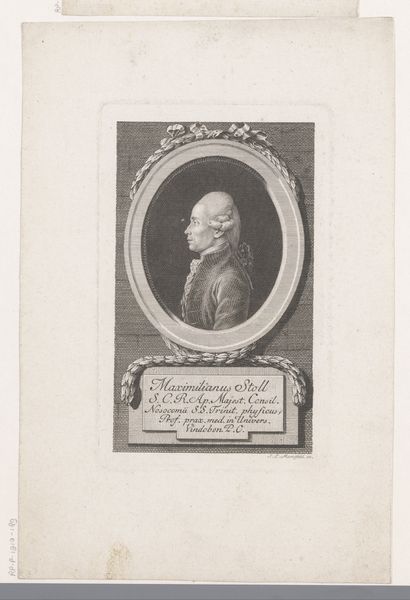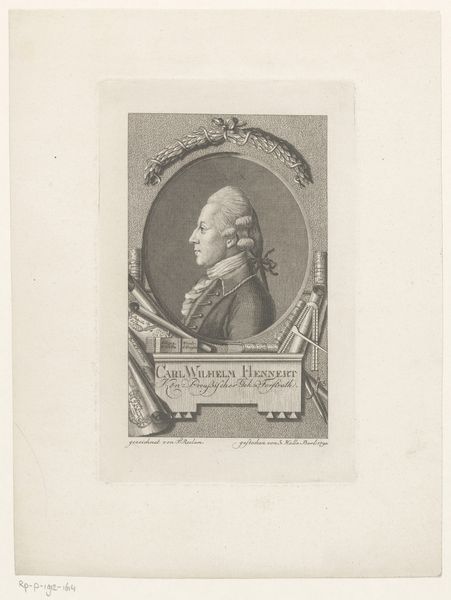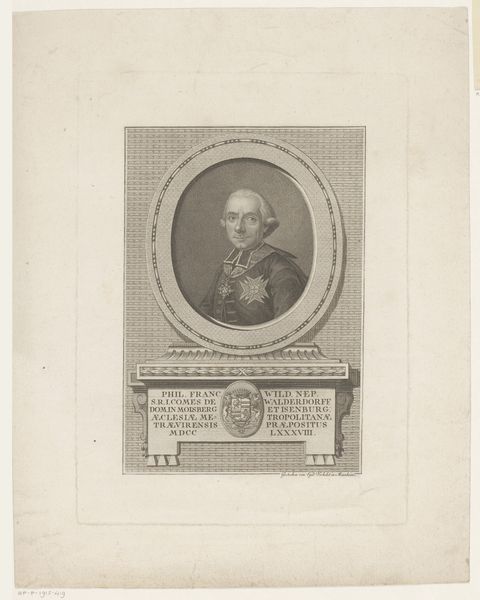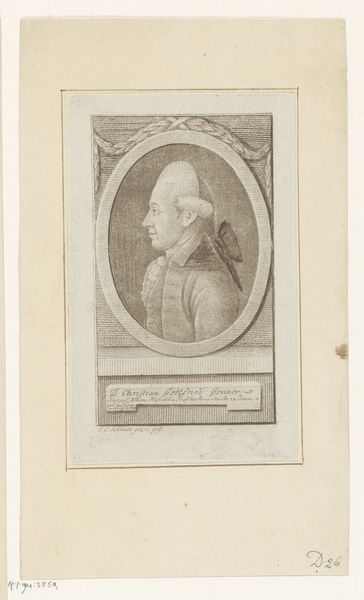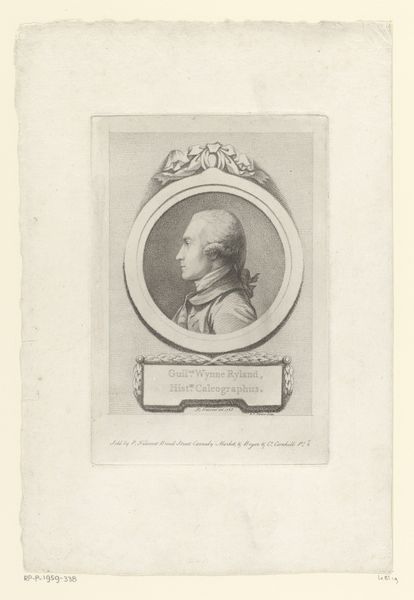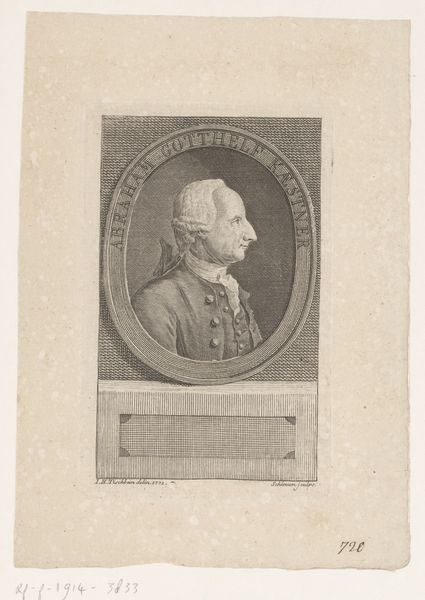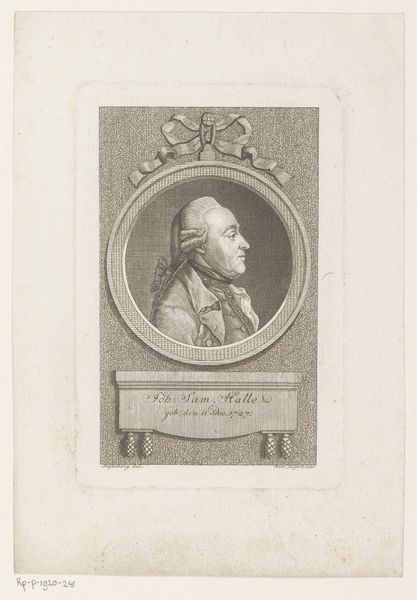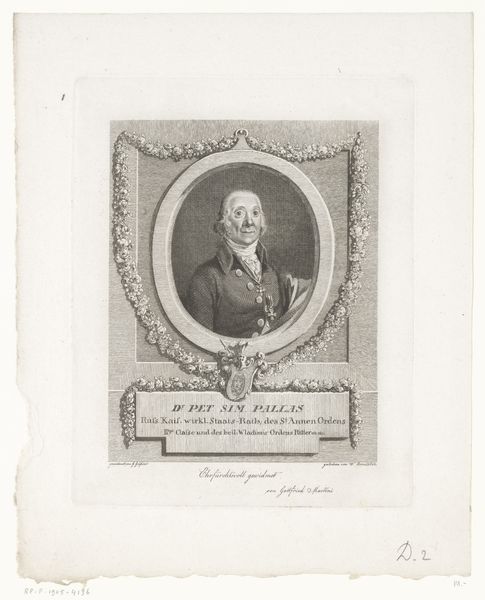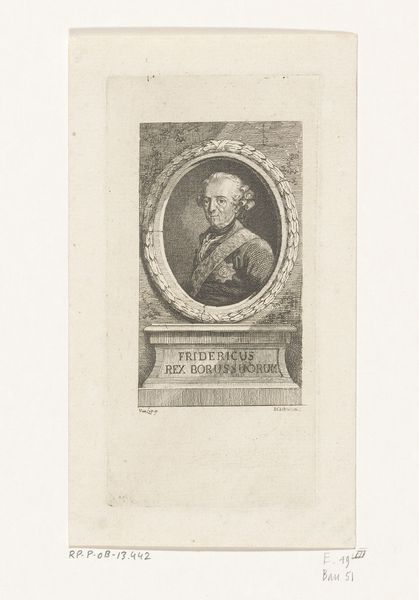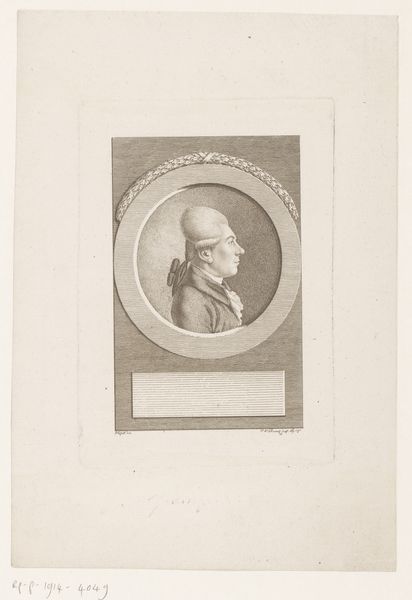
engraving
#
portrait
#
neoclacissism
#
old engraving style
#
form
#
personal sketchbook
#
19th century
#
line
#
history-painting
#
academic-art
#
engraving
Dimensions: height 173 mm, width 114 mm
Copyright: Rijks Museum: Open Domain
Curator: Looking at this engraving of Maximilian Stoll, dating from sometime between 1769 and 1828, the first thing that strikes me is its air of formal restraint. It's a very cool and controlled image. Editor: Cool, yes, but I'm also noticing the density of detail crammed into a relatively small space. All those tiny lines in the background create this incredible buzz around the portrait itself, and all those garlands and that inscription below also seem to press forward at you. It gives the piece an almost nervous energy. Curator: That detail, that careful control of line, is very much a product of the Neoclassical movement. And it speaks volumes about the sitter’s position within Viennese society at the time. Engravings like these were vital tools for disseminating images of important people. Editor: And Stoll certainly seemed important! Just look at how he’s framed! He's centered in an oval that contains an inscription saying, "Maximilian Stoll K.K. Rath und Professor zu Wien"—clearly a man of the state and of academia. Below, a cartouche reads "Wünscht Ärzten seine Kunst, und Königen sein Herz"— "Wishing physicians his art, and Kings his heart". What do you make of that, particularly his offering to the King? Curator: It reinforces the notion of a rigidly ordered society, with everyone having their defined roles. The physician offering his art, the King his heart, it all speaks to a structured, almost idealized hierarchy. Editor: Hmm, is it idealized, or just simply acknowledging where the power lies? After all, what kind of symbolic weight does "heart" carry if one has no power, no art? What about Stoll offering his "art" rather than "healing"? That feels pointed to me! Curator: Perhaps the engraver was reflecting on how societal roles and the rise of powerful individuals could reshape the existing hierarchies. These portrait engravings circulated widely, shaping public opinion and contributing to the construction of fame and status during the late 18th and early 19th centuries. The role of the state is, here, central to it all. Editor: Interesting. So in viewing this artwork, we find ourselves at an intersection of social hierarchy, personal ambition, and visual messaging. A true period snapshot!
Comments
No comments
Be the first to comment and join the conversation on the ultimate creative platform.
